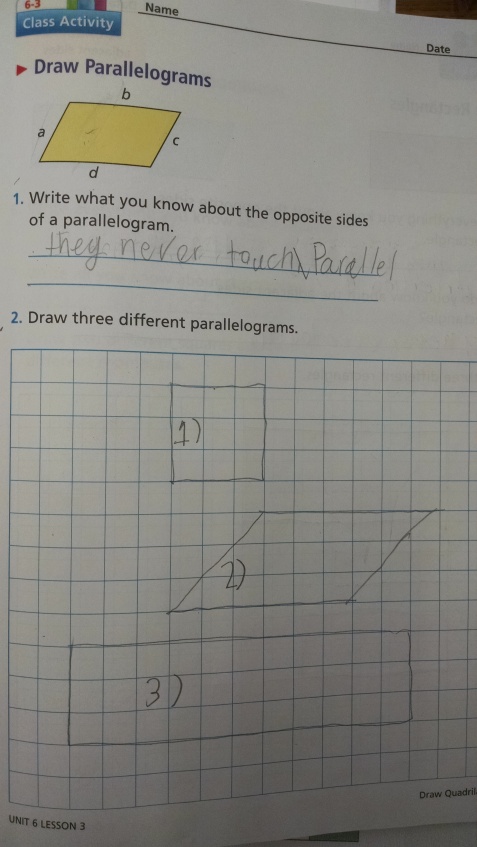3.2b Demonstrating Flexibility and Responsiveness in Lesson Adjustments
This standard is necessary for effective teaching because there are a variety of factors that can change a lesson during instruction. Teachers should be open and flexible to adjust their instruction based on how the students are engaging with the material or if there are interruptions in the learning environment. Using a lesson plan should be more of a guide for teachers, open to change and not rigid which might actually limit learning opportunities for students.
The evidence I have submitted below is an image of a page from a math worksheet which I had students work on because my lesson was losing the students attention. I needed to adjust my lesson because students were getting restless while working at the carpet completing a task that could have been completed more quickly. I had students on the carpet drawing different types of quadrilaterals on whiteboards and then taking turns drawing on the smart board. This proved to be too much wait time for students and the whiteboards started becoming distractions instead of tools to help students learn. After several reminders of redirection, I decided to end my instruction at the carpet and have students move to their desks, switching to drawing and explaining in their workbooks. Students were more successful after the switch and were able to progress through work books on their own.
I learned that being flexible to adjusting instruction is an important quality that benefits students and teachers time during a lesson. Instead of struggling through a task, switching locations will re-focus their engagement which resulted in more learning. I will be more mindful of what my students already know for future lessons and use these activities for more of a quick review to move on to more challenging material. Not having students sit in one place for too long will also help with pacing and keep their attention so as not to lose interest or focus on the specific content I am teaching.

